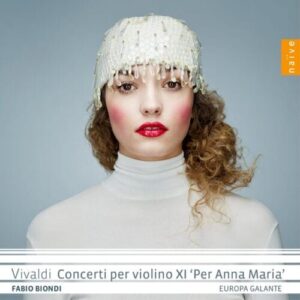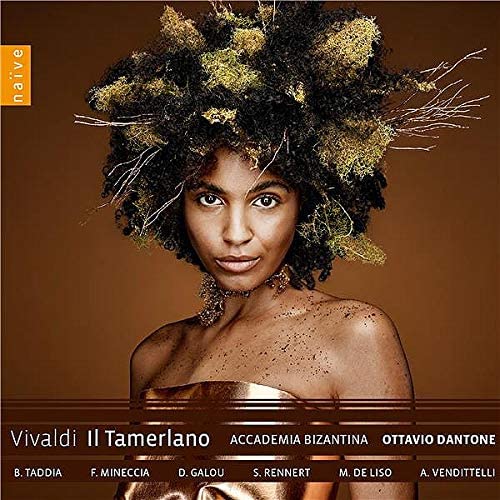Concerto per Violino XI, “Per Anna Maria”
Fabio Biondi, violin; Europa Galante
Naive Records
Anna Maria (1696-1782) was one of Antonio Vivaldi’s principal muses. She was a pupil of his at Ospedale delle Pietà, where he taught for forty years. A child prodigy, Anna Maria was a violinist of enormous talent. Vivaldi recognized this and composed at least twenty-four concertos dedicated to her.
Judging by the concertos performed by soloist Fabio Biondi, the composer entrusted Anna Maria with works requiring enormous facility and musicality. The D Major concerto that opens the recording begins with a brief snatch of a simple theme that is a red herring for the vigorous soloing to come. The ensemble plays with rhythmic verve and dynamics that, while terraced, bring an expressive character, powerful in the forte sections and dulcet in the soft. The middle movement is a harmonically twisty theme accompanied by the continuo, which includes a portative organ and lute. The finale is a gigue with quick-paced sequential passages for the soloist. A brief minor interlude is followed by a fleet-footed cadenza, played with nimble virtuosity by Biondi, then a bold conclusion.
The concerto in B-flat is subtitled “il corneto da posta” (the post-horn). The first movement is filled with zesty double-dotted rhythms. The second has a flexible solo part with an emotive minor middle section. The concerto does indeed make use of post-horn calls, albeit in strings, in its buoyant finale movement.
The Concerto in E-flat, RV261, is a particular standout, featuring a bustling Allegro in which the tutti are a muscular foil for Biondi, who plays ricocheting lines with a glimmering tone. The Adagio is a plaintive minor key movement, with the ensemble again emphatic while the solos are played with supple grace. The final movement is taken at a breathtaking tempo and is a showcase for both soloist and ensemble.
The concerto in C-major supplies some of the most regal-sounding music I have heard from Vivaldi in an instrumental context: it is as if he has borrowed Handel’s wig. Biondi demonstrates his talent for period-informed bespoke ornaments in the Largo movement. A separate track at the end of the recording demonstrates the score’s original ornaments. Touches like this make “Per Anna Maria ” an estimable contribution to Naive’s Vivaldi collection. It is one of my favorite recordings of 2023.
-Christian Carey

